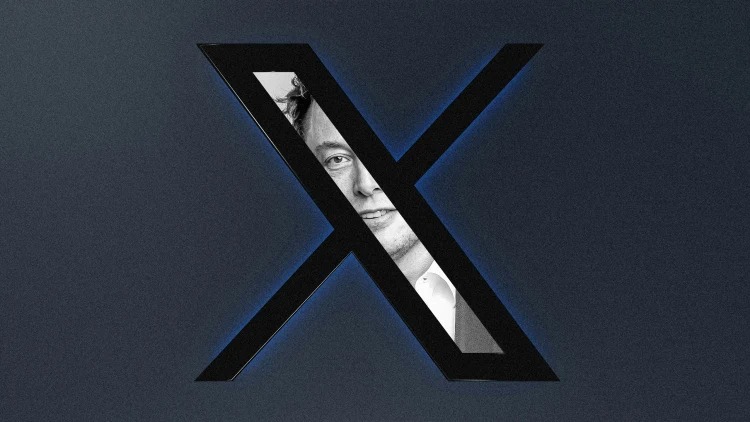- | 8:00 am
Why does X still seem to be running undisclosed ads?
The social media platform has long had an adversarial relationship with advertisers, which may be why it appears willing to blur the lines of what constitutes an ad.

If Elon Musk’s recent interview with Donald Trump on X (formerly Twitter) was meant to promote Trump’s return to the platform, it appears to have been false advertising. Since the interview, Trump has only used his X account twice—once to retweet an ad for a documentary about himself, once to post a goofy AI depiction of him and Musk disco dancing—while remaining far more active on his would-be competitor, Truth Social. The interview with Musk did herald the return of something else to X, however: scrutiny around its ad transparency.
Prior to the event Monday night, a post from Trump on X featuring both a campaign video and the hashtag #TrumpOnX appeared in users’ feeds—but not on Trump’s timeline. Some users took the disparity as proof that this tweet was a paid campaign ad, while others claimed the post actually did appear in their feeds marked as an ad. (Spokespeople for X did not return Fast Company’s request for comment about the post.) Whether it was indeed an official campaign ad or not, the mysterious post reignited ongoing discussions about how X has blurred the line between organic content and paid posts.
Advertising has been a fraught topic on X ever since Musk took over the platform in October 2022. The self-proclaimed free-speech absolutist went into the acquisition promising to make then-Twitter into a safe space for unfettered self-expression. From the outset, brands were understandably wary of what sort of dispatches their ads might appear alongside once Musk restored banned accounts and eased content moderation policies.
Roughly half the site’s biggest advertisers pulled out within the first month of Musk’s stewardship, with those that later returned spending far less money on ads than they had before Twitter’s X-ification, according to a report from Media Matters. The profound drop in advertising dollars, where the bulk of the site’s revenue comes from, eventually led X to file an antitrust suit against advertisers earlier this month, alleging a boycott.
The company’s desperation for ad revenue entered a new phase in the summer of 2023, when X began trying some fresh tactics to make the space more compelling for advertisers. First, the platform changed the formatting of promoted tweets, making their promotional aspect less obvious. Out went the little arrow pointing at the word ‘Promoted’ beneath these tweets; in came the word ‘Ad’ in the top righthand corner instead.
Pretty soon, users began reporting a new form of tweet that offered no hint about its commercial nature whatsoever. Neither the word “Promoted” nor “Ad” appeared on these posts, which were often undisclosed ads for brands with odd names like Cupquake. What came next, though, was even more devious. As Mashable noted, some posts began to appear last October that presented as organic tweets but featured no buttons to tally “likes” and retweets. Clicking anywhere on these stealth ads would transport users to a third-party website in a new window. Amid all this alleged foul play, the consumer watchdog group Check My Ads filed a complaint with the Federal Trade Commission (FTC) last November, claiming X had misrepresented its advertising practices. (So far, the FTC has not released a public statement in response to the complaint.)
“I’ve seen far fewer unlabeled ads on X lately,” Brandon Hardin, managing editor of Check My Ads, tells Fast Company. “They may have gotten a handle on the situation after we filed our complaint about the practice last year.”
Although the conversation around ad transparency on X has de-escalated since then, the line between ads and organic content on the site remains blurry. Martha Stewart might tweet an ad for Skechers using the hashtag #SkechersAmbassador, but with no other advertising designation; whereas Instagram, for instance, strictly requires all brand ambassadors to use its “paid partnership” label. Those who follow Tucker Carlson, who has a revenue-sharing deal with X, might encounter an hour-long video called “A Day in Maine with the Cybertruck,” without any indication that Carlson and Tesla CEO Musk are business partners. And as the mysterious Trump tweet suggests, X is still finding new ways to force X users to consume ads, and the company is also exploring new ways to force brands into advertising on X.
Musk and X CEO Linda Yaccarino’s recent antitrust lawsuit claims that the Global Alliance for Responsible Media (GARM), a nonprofit collective of major advertisers, coordinated with brands to deter them from advertising on X. “We were victimized by a small group of people pushing their authority or ability to monopolize what gets monetized,” Yaccarino told the New York Post, who refer to GARM as a “shadowy ad cabal.”
Shortly after X filed the lawsuit, GARM ceased operations, lacking the financial resources to continue running while also fighting X in court.
Although the New York Times reports that GARM did indeed encourage brands to avoid advertising on X following Musk’s purchase, it seems unlikely that this totally explains why they’ve largely cooled on the platform. Advertisers were voicing concerns about “a surge in misinformation and other toxic content” from the beginning of Musk’s tenure, and he has done himself no favors since then by notoriously boosting an antisemitic post last fall, and then telling fleeing advertisers, “Go f— yourself,” during the DealBook Summit days later. No wonder the company seems to have resorted to playing loose with the rules to lure in other advertisers.
On Tuesday, Yaccarino told Axios that X “will absolutely lean in to lead and mobilize the industry,” and “to take a new look about behaviors that are appropriate and transparent.”
If she and Musk are concerned about what is appropriate and transparent, though, they might want to take a new look inward as well.






































